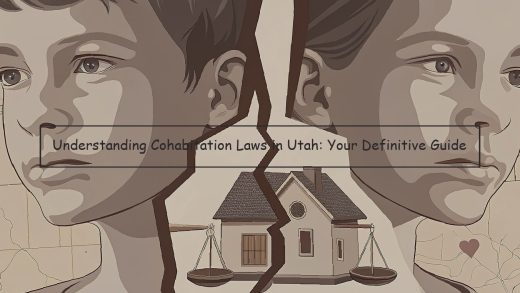
Family discrimination in the workplace can manifest in various forms, including biased treatment based on familial status or caregiving responsibilities. Such discrimination undermines fairness and equality in employment. This article aims to shed light on how to identify family discrimination and offers practical steps for individuals to challenge and combat unfair treatment.
Understanding Family Discrimination in the Workplace
Family discrimination in the workplace occurs when employees are treated unfairly or face biases due to their familial responsibilities or status. This can include discrimination against employees who are pregnant, parents of young children, caregivers for elderly family members, or those with any other family-related obligations. Such discrimination may manifest through exclusion from important projects, reduced hours, unfair evaluations, or even outright dismissal. Employers or colleagues may make assumptions about an employee’s commitment or availability based on their family status, often leading to unequal treatment.
This form of discrimination can be both direct and indirect. Direct discrimination might involve comments or policies explicitly targeting employees with family responsibilities, such as refusing to promote a mother because of her parental duties. Indirect discrimination can be more subtle, such as enforcing rigid work hours that disproportionately affect caregivers who need flexibility. Understanding these nuances is crucial to recognizing how family discrimination can be embedded in workplace practices and attitudes.
The Legal Framework Around Family Discrimination
The legal framework for addressing family discrimination in the workplace provides several protections for employees who face bias due to their family responsibilities. In many countries, specific laws and regulations are in place to safeguard against such discrimination. Here’s a closer look at the key legal protections:
- Family and Medical Leave Act (FMLA): In the United States, the FMLA allows eligible employees to take unpaid leave for certain family and medical reasons without losing their job. This includes leave for childbirth, adoption, or caring for a sick family member.
- Americans with Disabilities Act (ADA): The ADA requires employers to provide reasonable accommodations for employees with disabilities. This can include adjustments for those who need to care for a family member with a disability, ensuring they are not unfairly treated due to their caregiving responsibilities.
- Pregnancy Discrimination Act (PDA): The PDA prohibits discrimination based on pregnancy, childbirth, or related medical conditions. Employers must treat pregnant employees the same as other employees with similar abilities or limitations.
- Equal Employment Opportunity Commission (EEOC) Guidelines: The EEOC provides guidance on various forms of discrimination, including family-related bias. These guidelines help employees and employers understand what constitutes unfair treatment related to family status.
Understanding these legal protections is vital for both employees and employers. Employees should be aware of their rights and the legal recourse available if they face family discrimination, while employers need to ensure compliance with these laws to create a fair and supportive work environment.
Identifying Signs of Family Discrimination
Identifying family discrimination in the workplace involves recognizing both overt and subtle signs of unfair treatment based on an employee’s familial status. Overt discrimination may include explicit remarks or decisions, such as a manager openly expressing negative views about an employee’s family responsibilities or denying them opportunities for advancement due to their parental duties. This kind of discrimination is often easier to pinpoint but can be deeply damaging and damaging to employee morale and career progression.
Subtle forms of family discrimination can be more challenging to detect but are equally impactful. These might include indirect biases reflected in workplace policies or practices, such as inflexible scheduling that disproportionately affects employees with caregiving responsibilities. It can also manifest in the form of exclusion from important projects or decision-making processes, where employees with family obligations are overlooked despite their qualifications. Recognizing these signs requires a keen awareness of workplace dynamics and an understanding of how family-related biases can influence professional opportunities and workplace interactions.
Impact of Family Discrimination on Employees and Organizations
| Impact Area | Employees | Organizations | Examples |
| Psychological Impact | Increased stress, anxiety, and burnout | Decreased employee morale and job satisfaction | Employees may experience mental health issues due to unfair treatment |
| Financial Impact | Reduced income and career advancement | Higher turnover and recruitment costs | Employees might face financial strain or seek other job opportunities |
| Professional Impact | Limited career growth and opportunities | Decreased productivity and engagement | Employees might be excluded from promotions or key projects |
| Workplace Culture | Negative perception of fairness | Harmed reputation and employee relations | A culture of exclusion can develop, affecting overall workplace harmony |
Family discrimination can have a profound impact on both employees and organizations.
- Psychological Impact: Employees who face family discrimination often experience increased stress, anxiety, and burnout. This can significantly affect their overall mental health and job satisfaction. For organizations, the result is decreased morale and a negative work environment, which can further exacerbate employee disengagement and dissatisfaction.
- Financial Impact: Discrimination can lead to reduced income and hindered career advancement for affected employees. They may face financial strain or feel compelled to seek new job opportunities, increasing turnover rates. For organizations, this translates to higher recruitment costs and potential loss of valuable talent.
- Professional Impact: Employees subjected to family discrimination may find their career growth and opportunities limited. They might be overlooked for promotions or key projects, affecting their professional development. Organizations may suffer from decreased productivity and engagement as a result.
- Workplace Culture: Family discrimination can contribute to a negative perception of fairness within the workplace. This can damage the organization’s reputation and employee relations, leading to a culture of exclusion that impacts overall workplace harmony and productivity.
Understanding these impacts is crucial for both employees and employers to address and prevent family discrimination effectively.
Strategies for Addressing Family Discrimination
Addressing family discrimination in the workplace requires a multifaceted approach that involves both proactive measures and responsive actions. Here are several effective strategies:
- Develop Comprehensive Policies: Implement clear, written policies that address family discrimination and outline procedures for reporting and resolving complaints. These policies should include guidelines for accommodating family responsibilities and ensuring fair treatment.
- Promote Flexibility: Encourage and offer flexible work arrangements, such as telecommuting, adjustable hours, or job sharing, to support employees with family obligations. Flexibility can help mitigate the impact of family responsibilities on work performance and career progression.
- Provide Training and Awareness: Conduct regular training sessions for employees and managers on recognizing and preventing family discrimination. Awareness programs can help foster a more inclusive workplace culture and educate staff about their rights and responsibilities.
- Establish Support Systems: Create support systems, such as employee assistance programs or mentorship initiatives, to help employees balance their work and family responsibilities. These resources can provide guidance and support for those facing discrimination or struggling with work-life balance.
- Monitor and Evaluate: Regularly monitor workplace practices and employee feedback to identify potential issues related to family discrimination. Evaluate the effectiveness of existing policies and make adjustments as needed to address emerging challenges or gaps.
Implementing these strategies can help organizations effectively address and prevent family discrimination, creating a more equitable and supportive workplace for all employees.



